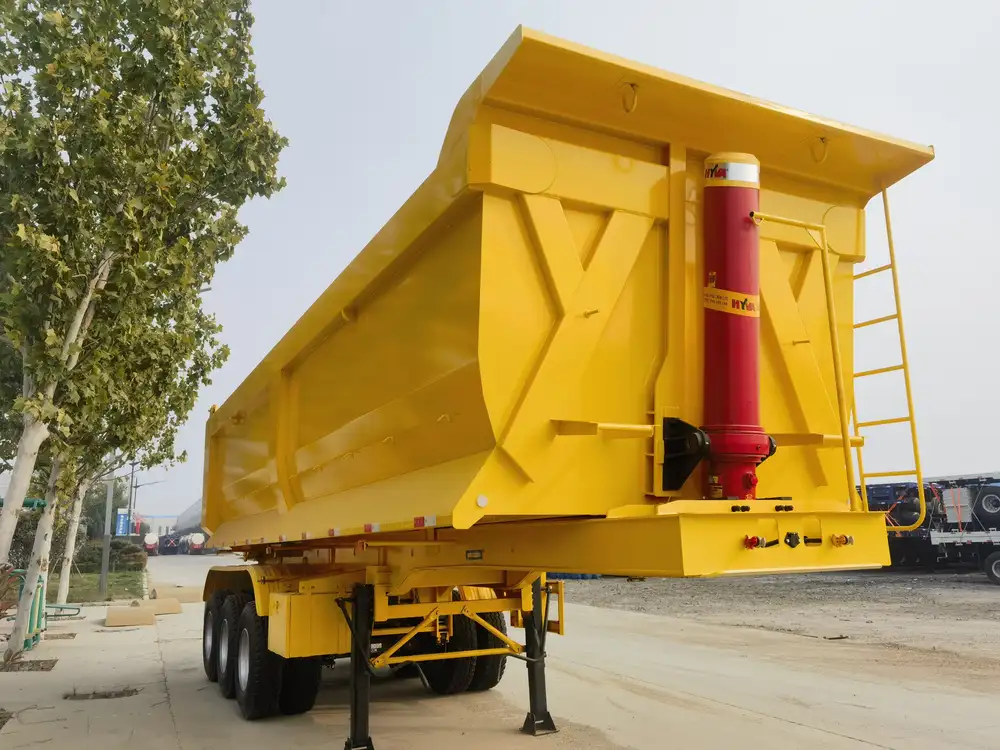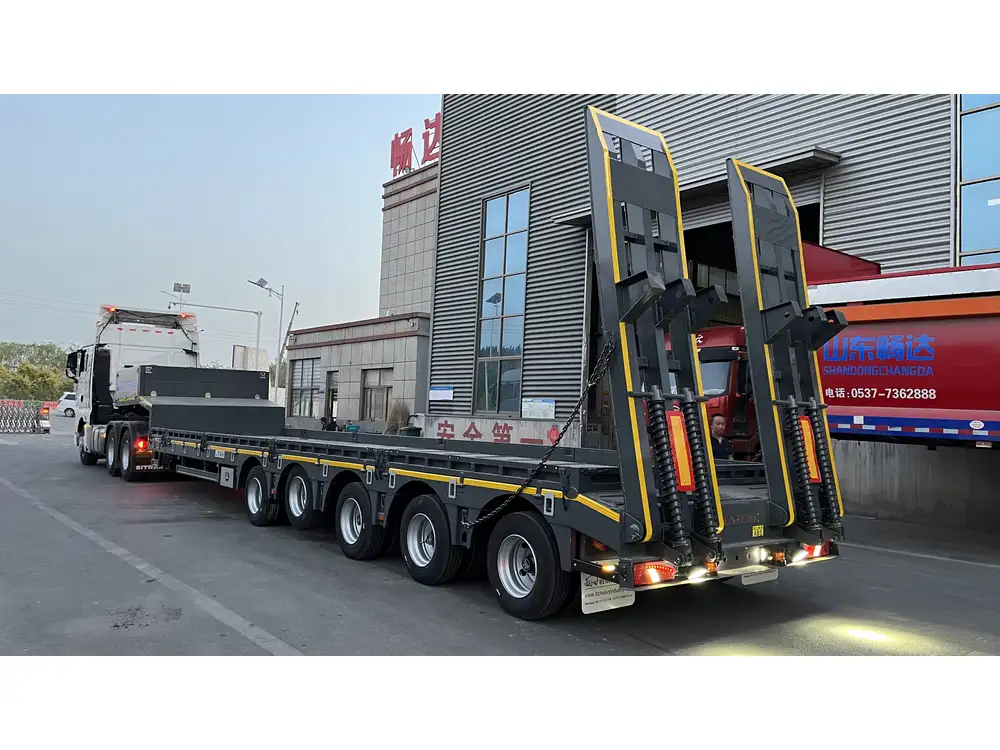Understanding the dimensions and specifications of semi-trailers is crucial for those involved in the logistics and transportation industries. At the heart of this discussion lies the iconic 53-foot semi-trailer — a size that has become a standard in freight transport. This article delves into the significance of the 53-foot semi-trailer, covering its history, design considerations, legal implications, and advantages in various operational contexts.
Historical Context
The modern trucking industry has evolved significantly over the decades. The move towards longer trailers can be traced back to the need for efficiency and cost-effectiveness in cargo transport.
| Year | Development | Impact on Trailer Length |
|---|---|---|
| 1920s | Introduction of the first semi-trailers | Shorter lengths (up to 40 ft) for individual needs |
| 1980s | Transition to longer trailers, gaining prevalence | Boost in industry standards, leading to 53 ft becoming widely adopted |
| 1990s-Present | Legal regulations solidifying 53 ft length | Standard among long-haul freight transport |
As shown, the 53-foot semi-trailer emerged as a response to the increasing demands in freight transportation, allowing for enhanced volume capacity and improved logistics.
Design Specifications

Dimensions and Weight Limits
The 53-foot semi-trailer typically measures 53 feet in overall length, 8.5 feet in width, and 13.5 feet in height. Important specifications include:
- Length: 53 feet
- Width: 102 inches (8.5 feet)
- Height: 13.5 feet (standard for most roads)
- Maximum Gross Vehicle Weight (GVW): Up to 80,000 pounds (including tractor and trailer weight)
These dimensions are crucial not only for maximizing cargo volume but also for complying with federal and state regulations.
Structural Components
The construction of a 53-foot semi-trailer involves several key materials and engineering features:
- Frame: Typically made from high-strength steel or aluminum to provide necessary durability while minimizing weight.
- Flooring: Often constructed using plywood, steel, or aluminum, providing a sturdy base for cargo.
- Suspension System: Air ride or spring suspension systems absorb shocks, ensuring the safety and integrity of the cargo during transit.
- Wheels and Axles: Most configurations include tandem axles, which enhance load distribution and facilitate smoother handling.
These design elements contribute to the overall efficiency and productivity of the trailer in transportation operations.
Legal Regulations and Standards
The choice of a 53-foot semi-trailer is not merely a matter of preference but is also deeply influenced by legal requirements governing transportation.

Federal and State Regulations
In the United States, the Federal Highway Administration (FHWA) sets regulations that dictate trailer dimensions and weight limits:
- Length Limitations: According to the FHWA, a semi-trailer can extend 53 feet long in interstate commerce, with a maximum overall vehicle length set at 65 feet for combination vehicles.
- Weight Restrictions: The standard federal weight limit is 80,000 pounds for six axles, crucial for maintaining road safety and infrastructure longevity.
These regulations ensure that semi-trailers operate within limits that protect roadways and enhance traffic safety.
International Standards
Globally, many countries also recognize the 53-foot trailer as a standard. This is particularly relevant in transcontinental logistics where freight may cross borders:
- North America: Canada follows similar regulations concerning trailer lengths, facilitating streamlined cross-border freight transport.
- Europe: While the average semi-trailer length is shorter, regulatory bodies allow configurations that can interchangeably accommodate similar cargo volumes.
Advantages of Choosing 53-Foot Semi-Trailers
The adoption of the 53-foot semi-trailer presents numerous benefits for businesses and logistics companies.

Increased Cargo Capacity
One of the most compelling reasons to choose a 53-foot semi-trailer is the sheer volume of cargo it can carry:
- Capacity: Most 53-foot trailers can accommodate up to 26 standard pallets or up to 10,000 cubic feet of cargo space, making it ideal for businesses that require significant load transport.
- Efficiency: The ability to transport larger loads reduces the number of trips needed, thus lowering fuel costs and improving delivery times.
Versatility Across Industries
The versatility of 53-foot semi-trailers makes them suitable for a multitude of industries including:
- Retail and E-commerce: High-demand industries benefit from the trailer’s capacity to deliver large volumes of merchandise in fewer shipments.
- Manufacturing: Raw materials or finished goods can be efficiently transported to and from manufacturing facilities.
- Food and Beverage: The refrigerated variants of 53-foot trailers maintain optimal transport conditions for perishables, ensuring quality upon arrival.
Operational Cost-Effectiveness
From an economic perspective, utilizing a 53-foot semi-trailer may lead to substantial savings:
- Fuel Efficiency: The capacity to carry more cargo at once can lead to reduced fuel consumption per unit of cargo, translating to cost savings.
- Labor Efficiency: Fewer deliveries require less manpower, optimizing the workforce involved in logistics operations.
By analyzing these factors, it’s clear that the benefits of using a 53-foot semi-trailer significantly contribute to a company’s bottom line.

Common Misconceptions About Semi-Trailers
While the advantages of 53-foot semi-trailers are well-documented, several misconceptions may still persist.
| Misconception | Reality |
|---|---|
| Longer trailers are less maneuverable | Modern design and engineering make them highly maneuverable with proper handling techniques. |
| They are only suitable for long distances | Many logistics providers use them for short-haul deliveries due to efficiency needs. |
| Greater length means less weight capacity | The structural design allows for optimal weight distribution regardless of the trailer’s length. |
Addressing these misconceptions can help businesses make informed decisions when selecting the appropriate trailer for their transportation needs.
Selecting the Right Semi-Trailer
Choosing the right trailer involves a thorough evaluation of operational needs. Here are critical factors to consider:
Assessing Cargo Types and Dimensions
Understanding the kind of cargo being transported is essential:
- Volume: Calculate the cubic footage and pallet positions required to ensure an appropriate fit within the trailer.
- Weight: Confirm that selected loads will comply with weight regulations, ensuring safe transport without incurring fines.

Evaluating Routes and Regulations
Road conditions, state regulations, and types of routes can also influence choice:
- Interstate versus Intrastate: Different regulations apply based on the geographical area of operation, affecting trailer requirements.
- Urban Deliveries: Assess the feasibility of operating longer trailers in city environments where maneuverability could be an issue.
Considering Future Growth and Adaptability
As businesses expand, their transportation needs may evolve. Investing in larger trailers such as the 53-foot model ensures an adaptable fleet capable of meeting growing demands.
Conclusion
The 53-foot semi-trailer is more than just a measurement; it’s a pivotal element in the modern logistics landscape, engineered for efficiency, compliance, and versatility. By understanding its historical context, structural specifications, and implications in the broader transport ecosystem, businesses can leverage this standard size to enhance performance and profitability.
Equipping your fleet with 53-foot trailers can drive significant operational efficiencies, reduce costs, and support growth strategies, opening doors to new opportunities in freight transport. As logistics continues to evolve, embracing the versatility and capacity of the 53-foot semi-trailer will undoubtedly solidify a company’s competitive edge.



